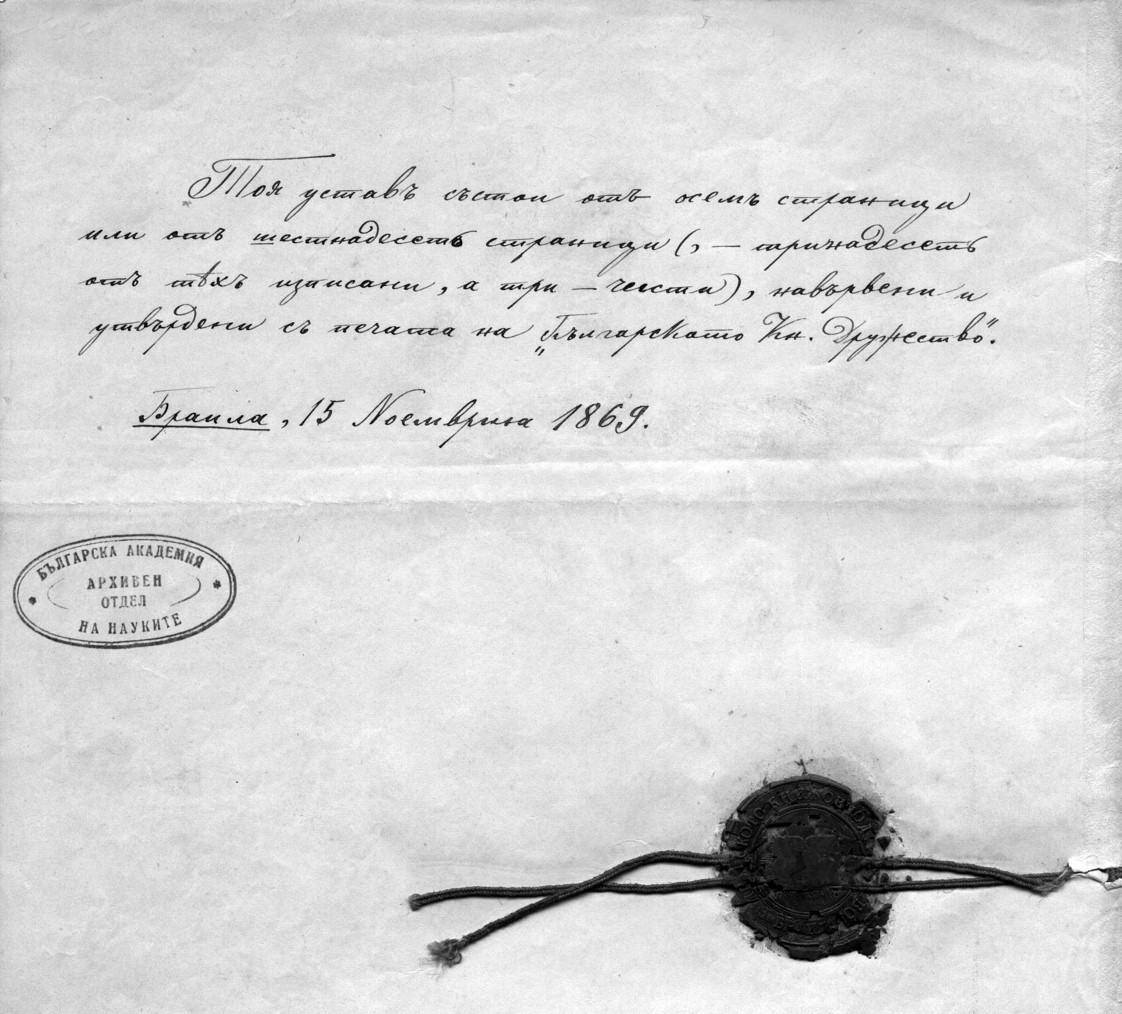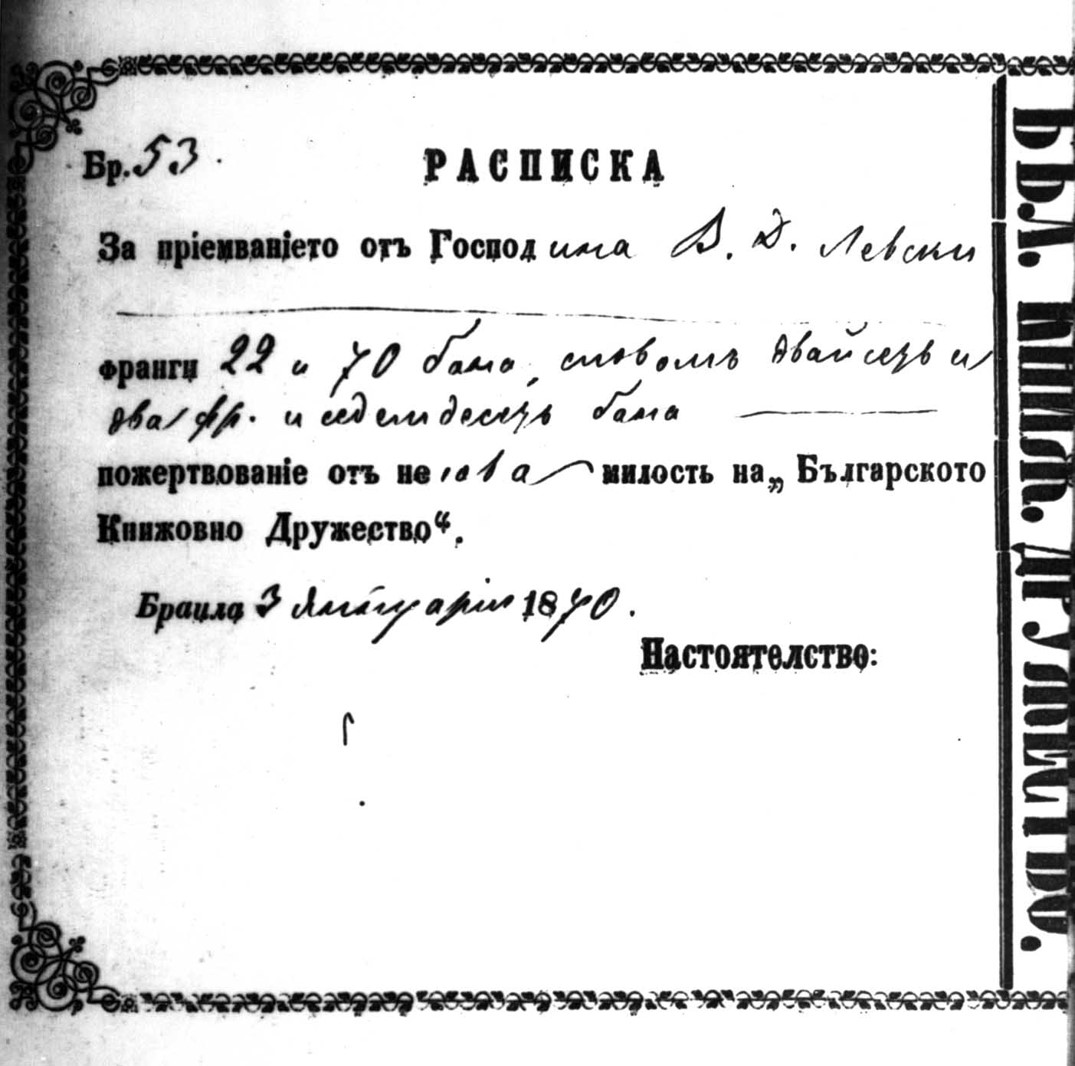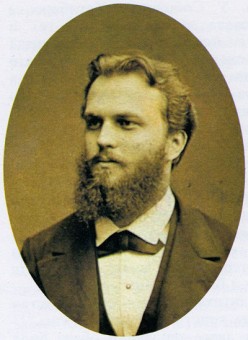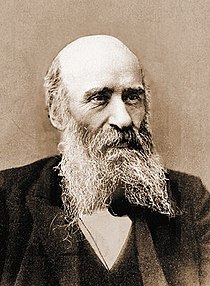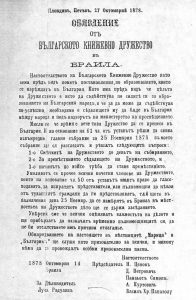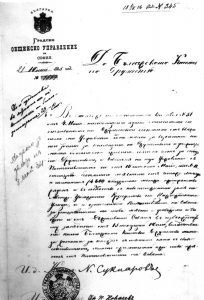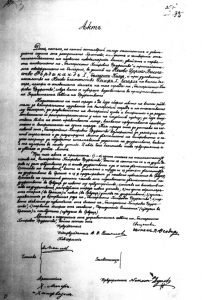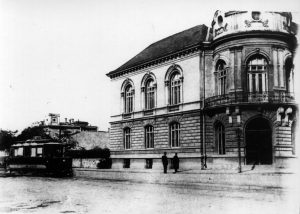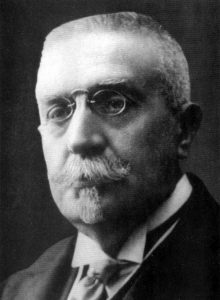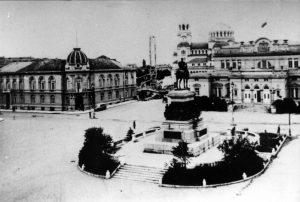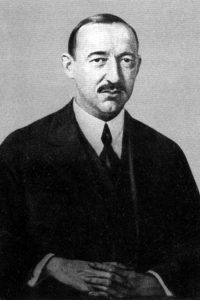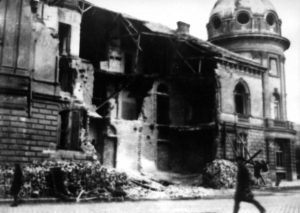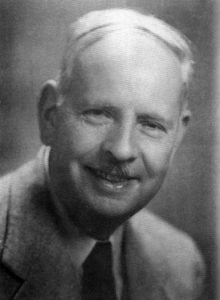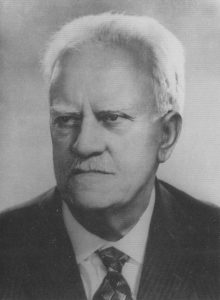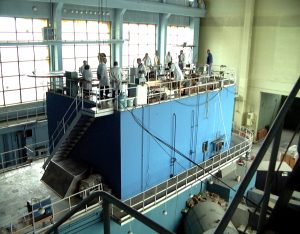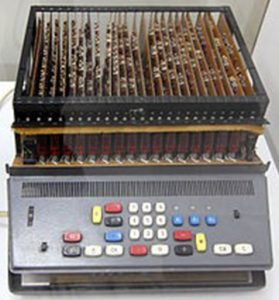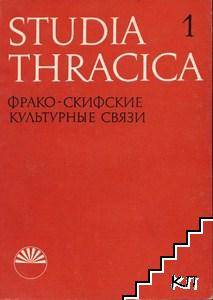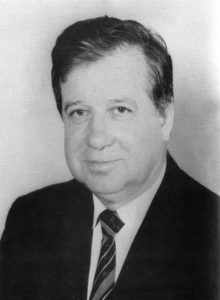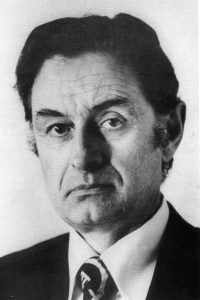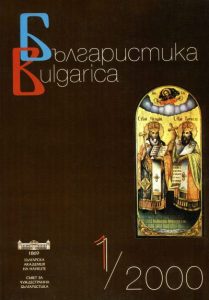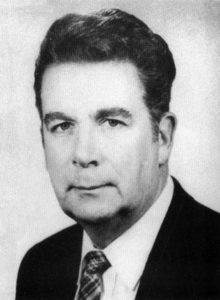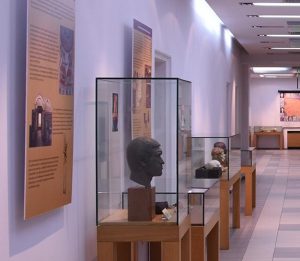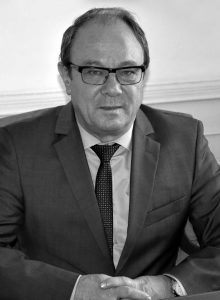The History of BAS
from 1869 to 1877
September 25-30, 1869
The Bulgarian Learned Society (BLS) was founded in the end of September 1869, in the house of Varvara Hadzhi Veleva in Brăila, Romania. On 29th September the first Statutes of BLS was adopted; the first Board of BLS was also elected, by secret ballot. It consisted of a Board of Trustees and full members.
Board of Trustees:
Nikolai Tsenov – President
Vasilaki Mihailidi
Petraki Simov
Kostaki Popovich
Stefan Beron
Actual members:
Marin Drinov (1838-1906) – President,
Vasil Drumev (1840-1901) – Member,
Vasil D. Stoyanov (1839-1910) – Secretary.
On 30th September, Nikolai Tsenov received all the documents of BLS. All those who attended the Constituent Meeting took an oath.
1870-1871
In 1870, the first issue of “Periodical Journal of the Bulgarian Learned Society”, an organ of BLS, was published, with Editorial Board: V.D. Stoyanov, T. Peev, A. Teodorov-Balan, D. Mollov and others.
That was the first Bulgarian scientific and literary-critical journal. It was published in Braila in 1870-76 and in Sofia in 1882-1910; since 1911, it has been renamed “Journal of the Bulgarian Academy of Sciences”.
In the same year, many patriotic Bulgarians donated funds for the development of BLS.
In 1871, the first honorary member of BLS was elected: Gavril Krastevich, a Bulgarian scholar and a public figure.
In the picture: donation receipt issued to Vasil Levski
1872-1875
1872 – The Czech Konstantin Jirecek was the first foreigner to become a corresponding member of BLS, after publishing the first bibliography of the new Bulgarian literature.
1873 – First classification of the book fund in the library of BLS, done by Vasil Drumev.
1873 – Vasil D. Stoyanov was replaced by Todor Peev as BLS secretary.
In the picture: Konstantin Jirecek
1876-1877
1876 – The orthography of BLS (the so-called Drinov spelling), which would be imposed as an official norm for Bulgaria after the Liberation, was fully formed.
1876 (middle) – (beginning) 1878 – Due to unfavorable financial and political conditions, BLS in Braila minimized its activity. Only the library continued to function.
In the picture: Marin Drinov
The History of BAS
from 1878 to 1910
1878-1882
1878, 26-28 November – an Extraordinary General Meeting was held in Braila which took the decision to move the headquarters of BLS to Sofia.
The members of the Bulgarian Learned Society were actively involved in the political and cultural processes of the Principality of Bulgaria.
1882, October – The National Assembly granted an annual subsidy of BGN 12 000 for publishing of the journal and for maintenance of the Society.
In the picture: Announcement for the relocation of BLS from Braila to Sofia, October 14, 1878, Braila
1882-1890
In 1882, the Minister of National Education, Konstantin Jirecek, appointed a Temporary Steering Committee to restore and manage the activities of BLS. The chairman of the committee is Vasil D. Stoyanov. The publishing of the “Periodical Journal of the Bulgarian Learned Society” was resumed. A Regulation for the temporary management of BLS, which was in force until 07.08.1884, was adopted.
On 7 June 1882, BLS addressed Sofia Municipality with a request to provide a site for a building of the Society. This request was satisfied in March 1884, with Sofia City Council, giving a building site to BLS on Tsarigradska Str., with certificate N 833.
The first General Assembly of BLS after the Liberation was convened on 7 August 1884. It adopted a new Statute that established a new structure and a new scientific organization of BLS. Three scientific branches were created: historico-philological, for natural and medical sciences and for state sciences. The scientific management consisted of a president, a vice-president, a secretary, a treasurer and chairpersons of the branches. Professor Marin Drinov was elected President.
In the picture: The mayor of Sofia, N. Suknarov, is informing the Bulgarian Learned Society that the City Municipal Administration was giving ownership to BLS of a site for the construction of a Society building, June 21, 1883, Sofia
1890-1900
The foundation stone of the BLS building was laid on 5 October 1890. On 25 October 1898, the next General Meeting of BLS was held. A permanent council was elected, and Ivan Geshov was elected President. A partial structural change was made, with physical-mathematical sciences joining the branch of natural-medical sciences.
Between 14 November 1899 – 5 December 1900, BLS General Assembly was discussing the new Statute which was adopted on 5 December. On January 12, 1900, the Minister of National Education approved the Statute which was in force until 1911.
In the picture: Act of laying the foundation stone of the building of BLS, 5 October, 1890, Sofia
1900-1910
1901-1903 – A Collection of Folklore, owned by the Ministry of Education, was transferred for publishing by BLS; the Society was then receiving an annual subsidy of BGN 24,000 for the publication of the “Periodical Journal” and “The Collection”.
1906 – Extension of two wings to the building of BLS; the building continued to be leased to the Ministry of Foreign Affairs and Religions.
1908, January – BLS President, Ivan Evstratiev Geshov, paid with personal funds the mortgage loan of the Society and thus allowed for financial independence and creation of conditions for transformation of the Society into an academy of sciences.
In 1906, the series “Bulgarian starini” (Bulgarian literture, historic and ethnographic finds) was first published.
In 1908, the President of BLS, Ivan Geshov, made a personal donation to the Society of 120 000 golden leva by paying its mortgage debt.
In the picture: BLS building in 1906
The History of BAS
from 1911 to 1946
1911-1920
On 6 March 1911, BLS became a Bulgarian Academy of Sciences. The first President of BAS is Ivan Geshov.
The First Law on BAS was promulgated on 1 February 1912.
In 1913, the “Journal of BAS” was first published.
In 1914, a commission was set up for the development of a project for the compilation of a complete dictionary of the Bulgarian language comprising A. Teodorov-Balan, B. Tzonev and Iv. A. Georgov.
On 15 June 1916, a committee was set up for publishing documents on the Bulgarian history comprising Yurdan Trifonov, Jordan Ivanov and Vasil Zlatarski.
On 9 June 1918, the first elections of new members of BAS took place.
In the picture: Ivan Geshov
1920-1930
On 14 June 1923, the so-called Dictionary committee was set up for the collection of the Bulgarian lexical richness and the creation of dictionaries of the Bulgarian language.
On 27 May 1926, the foundation stone of the new building of BAS was laid aiming at extension of the building rented to the Ministry of Foreign Affairs and Religions.
In 1926, 22 Academicians drew personal credit from the Bulgarian National Bank at the amount of BGN 3 million, against a mortgage, to complete the new building.
On 14 May 1929, an official assembly of BAS was held on the occasion of the 50th anniversary of the Liberation of Bulgaria and the 1000th anniversary of Tsar Simeon I. The royal family was present. The new building of the Bulgarian Academy of Sciences was officially opened.
In the picture: The building of BAS before the extension in 1926
1930-1940
In 1931, BAS was accepted in the International Council of Scientific Unions.
In the building of BAS, in 1937, a public reading room for students was opened in the name of the donor Stefan Panaretov.
On 2 October 1938, an extraordinary General Assembly of BAS proclaimed Tsar Boris III an honorary member of BAS.
In April 1940, the National Assembly adopted a Law for Reorganization of BAS and named the Academy: the Bulgarian Academy of Sciences and Arts (BASA). On June 30, 1940, the General Assembly of BAS adopted a Statute of BASA.
In the picture: Academician Bogdan Filov, President of BAS and BASA from 1937 to 1944
1940 – March 1944
In 1941, a conflict arose between Prime-Minister Bogdan Filov and the majority of the Academicians on the draft amendments to the Act on BASA proposed by Filov which stipulated that the BASA Scientific Secretary would be appointed and not elected, as was the tradition and according to the Statute of BAS.
In March 1941, the National Assembly, on proposal of B. Filov, adopted a law supplementing the BASA Act. The supplement legalized a paragraph stipulating that the Scientific Secretary of BASA should be appointed by the Minister of National Education.
In the period January-March 1944, a part of the BASA building was destroyed as a result of bombardments. BASA’s activity was temporarily interrupted.
In the picture: The destroyed right wing of BAS building (part of the library and the big hall) after the air bombardments over Sofia – March-April 1944
March 1944 – 1946
In the period November-December 1944, a temporary management of BASA was set up with President D. Mihalchev and Secretary Sp. Kazandzhiev.
An extraordinary General Assembly was held on 14 January 1945 for the election of new regular and extraordinary members of BASA.
In the picture: Acad. Dimitar Mihalchev, President of BASA in the period 1944-1947
The History of BAS
from 1947 to 1988
1947-1960
1 February 1947 – The Bulgarian National Assembly voted a new law, which restored the old name – BAS. The Academy was defined as “the highest scientific institution in the country”, “a state institution with its own creative, organizational and administrative life”, which was under the authority of Council of Ministers.
27-28 February 1947 – adoption of the Statute of BAS
On 4 March 1947, Todor Pavlov was elected President of the Academy.
In September 1949, the structure of BAS was changed. The departments and branches were replaced by 7 divisions for: physics, mathematics and technical sciences; geological-geographic and chemical sciences; biological and medical sciences; history, archaeology and philosophy; legal and economic sciences; linguistics, ethnography and literature; fine arts and culture. The institutes of the Academy were defined as the main research bodies of BAS.
New regulations for the PhD degree at BAS were adopted in 1951.
1957 – Agreements were concluded with the Polish Academy of Sciences, the German Academy of Sciences at Berlin, the German Academy of Agricultural Sciences, the Czechoslovak Academy of Sciences and the Academy of the People’s Republic of Romania.
1960 – a Technical Sciences division was established at BAS with the following institutes: Institute of Energetics, Technical Institute, Institute of Urban Planning and Architecture. The division of Technical Sciences also had separate sections on automation and telemechanics and on metal science and metal technology.
In the picture: Academician Todor Pavlov
1961-1962
On 28 August 1961, the Council of Ministers issued a decree on the establishment of an independent Academy of Agricultural Sciences under the Ministry of Agriculture.
In 1961, the first nuclear reactor in Bulgaria was put into operation under the guidance of the then Director of JINR in Dubna, Prof. Dmitry Blokhintsev.
A separate chemical sciences division, including an Institute of General and Inorganic Chemistry, Institute of Organic Chemistry and Institute of Physical Chemistry was established in 1961.
In 1961, the method of gas counter pressure casting was approved, created by Acad. Angel Balevski and corr.-mem. Ivan Dimov which was designed for obtaining materials with optimal structure, without defects in the metal. Counter pressure casting has been widely used in the automotive industry, especially in the production of wheel rims, and has been used with outstanding success by leading automotive companies in 25 countries.
In 1962, the first Bulgarian digital electronic tube computerized machine with the program “Vitosha” was created and installed.
At the end of 1962, the Institute of Physics of BAS was renamed the Institute of Physics with Atomic Scientific Experimental Base at BAS.
In the picture: The Reactor in the building of the Institute of Nuclear Research and Nuclear Energy
1964-1970
1964 – a new institute in the field of historical sciences – Institute of Balkan Studies – was set up to study the past of the Balkan peoples and to promote their cooperation.
In 1964, the first Bulgarian and the fourth in the world electronic calculator “Elka” was implemented in production.
In September 1967, a Central Laboratory of Photographic Processes was established at the Institute of Physical Chemistry, aiming at exploring new phenomena in photography. A Research Center for Africa and Asia was also set up to explore the economic and political processes in developing countries in this region. In order to strengthen the research of the social processes in society and to clarify the regularities of its development, an Institute of Sociology is established at the Academy.
In 1969, the 100th jubilee from the establishment of BAS was celebrated.
In the period 1969-1970, an experimental model for integration between the Faculty of Mathematics of Sofia University and the Institute of Mathematics and Mechanics of BAS was created.
In the picture: The first Bulgarian electronic calculator “Elka”, weighing 8.5 kilograms, with 3 registers and working with 12 decimal numbers
1971-1980
On 21 April 1972, a Decree of the Council of Ministers was issued, according to which the divisions of BAS were replaced by Unified Centers for Science and Training of Staff (UCSTS). Thus, functional integration with Sofia University was sought.
21 December 1972 – The General Assembly of BAS adopted a new Statute of the Academy. A new reorganization of the institution was made on the basis of it. The Statute was approved by State Council Decree No 1029 of 4 May 1973.
In 1972, the Institute of Thracology at BAS was founded, with print editions: Orpheus, Journal of Indo-European and Thracian Studies and Studia Thracica.
1977 – the technical units (Institute of Technical Cybernetics, Institute of Metal Science and Metal Technology, Institute of Water Problems, Central Laboratory of Physical and Chemical Mechanics) came out of UCSTS and formed a new Scientific Union on basic problems of the technical sciences.
In 1975, in the automotive industry of the Eastern European countries, the wide implementation of the bright acid copper plating B-7211 began. It was created by a team of scientists at the Institutes of Organic Chemistry and Physical Chemistry of BAS and in the following years it was used in the production of over 1 500 000 cars.
1979 – The Central Laboratory of Applied Physics at BAS which works in the field of theory and application of optoelectronics and semiconductor sensors became a subsidiary of the laboratory of the Nobel laureate Academician Joris Alferov at the Physico-Technical Institute “A. F. Joffe” in Leningrad.
In the picture: The first edition of Studia Thracica
1981-1988
In 1981, the so-called Golden Book of Discoverers and Inventors in Bulgaria was established.
On 14 July 1988, in accordance with the project “Basic Guidelines and Tasks for the Reconstruction of the Scientific Front”, the Politburo of the Bulgarian Communist Party decided to close down the nine existing Unified Centers of BAS, as well as the Scientific Unions and the independent institutes.
On 25 July 1988, the General Assembly of Academicians and Corresponding Members, as the supreme governing body of the Academy, elected Academician Blagovest Sendov President of BAS.
In the picture: Acad. Blagovest Sendov
The History of BAS
from 1989 to 2019
1989-1991
At the beginning of 1989, the unified centers and scientific unions for research and staff training were closed down by decision of the Council of Ministers.
On 21 December 1989, the General Assembly of Academicians and Corresponding Members voted for the resignations of some members of the Presidium and accepted new members. Academician Sendov remained President of BAS.
On 28 February 1990, the Presidium of BAS established a Commission on complaints and violations of the rights of scientists, chaired by the international law expert corr.-mem. Alexander Yankov.
15 October 1991 – the Law on BAS was adopted, according to which the Academy was “a national autonomous scientific organization that comprises academic institutes and other autonomous structural units”.
9 December 1991- The first General Assembly elected Academician Jordan Malinovski acting President of BAS as well as his vice-presidents and scientific secretaries by divisions.
In the picture: Academician Jordan Malinovski
1992-1994
In January 1992, a Commission was set up to examine the participation of the Academy in the “Revival Process”, headed by Prof. Ivan Bozhilov.
10 February 1992– a new Committee on Ethics, headed by Prof. Nikolay Yanev, was set up.
6 July 1992 – A regular management of the Academy was elected in the face of Academician Jordan Malinovski.
29 June 1992- The First General Assembly voted the Statute of BAS according to which the Academy is a national autonomous organization that conducts fundamental research, promotes it and trains highly specialized staff.
16 May 1994 – By order of the President of BAS, a Council for Bulgarian Studies Abroad was established, chaired by Prof. Dr. Anisava Miltenova, with printed edition Bulgarica.
1994 – Attestation and redundancies of scientists and units of BAS were conducted.
1994 – Academician Malinovski was awarded a prize by the European Academy of Arts, Sciences and Letters “for the determination, persistence and consistency” with which he was conducting the reform as President of BAS.
In the picture: Bulgarica Journal
1995-2002
On 8 April 1996, Academician Ivan Juhnovski was elected President of BAS. He was re-elected President of the Academy until 2008.
The “Information Bulletin of BAS” was first issued in July 1996.
In January 1997, a Training Center was established at BAS.
1999 – BAS joined the European exchange scheme.
2002 – BAS became a member of the European Science Foundation.
In the picture: Ivan Juhnovski
2005-2010
2005 – An Innovation Center to attract contacts from the country and abroad was opened, which, in 2010, was renamed Joint Innovation Center of BAS. It became a coordinating unit BAS in the policy of innovations, patent and project competence.
In 2007, a National Anthropological Museum and a National Center for nuclear magnetic resonance were opened at BAS.
18 June 2008 – V General Assembly elected Academician Nikola Sabotinov President of BAS.
2008 – the first Regional Academic Centers, in Plovdiv and Varna, were established
May-November 2009 – The academy was under international review by external evaluators from the European Science Foundation and the European Federation of National Academies of Sciences (ALLEA). As a whole, the experts’ conclusion was that “the majority of BAS institutes carry out valuable research according to international standards.”
2010 – on the basis of the international evaluation and the national attestation, a reform was carried out at BAS whereas the institutes consolidated and became 42, plus 5 specialized units united in 9 main scientific divisions.
In the picture: The National Anthropological Museum at BAS
2011-2019
On 31 March 2011, the Law on the Development of the Academic Staff of the Republic of Bulgaria which equates the academic positions at BAS and the higher education institutions came into force.
11 June 2012 – The VI General Assembly elected Academician Stefan Dodunekov President of BAS.
August-December 2012 – due to the death of Academician Dodunekov, acting President became Prof. Eugene Nickolov.
2013 – a new general academic journal: “Papers of BAS. Humanities and Social Sciences” was first issued – in Bulgarian and English in electronic form, and on paper – only in English.
On 3 December 2012, the VI General Assembly elected Academician Stefan Vodenicharov President of BAS.
On 1 December 2016, the VII General Assembly elected Academician Julian Revalski President of BAS.
2017-2018 campaign “BAS is presenting its institutes”
2018 – BAS developed a Strategy for the Development of BAS in view of the National Strategy 2017-2030
2018 – The National Institute of Meteorology and Hydrology of BAS transfers to the Ministry of Education and Science
2019 – Celebrations of the 150th anniversary of BAS
In the picture: Acad. Julian Revalski


